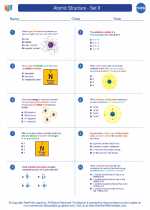Thrombocytes
Thrombocytes, also known as platelets, are small, irregularly shaped cell fragments present in the blood of mammals, including humans.
Structure of Thrombocytes
Thrombocytes are not complete cells but rather small cell fragments. They lack a nucleus and are much smaller than red or white blood cells, typically measuring 2-3 µm in diameter.
Function of Thrombocytes
Thrombocytes play a crucial role in the blood clotting process. When a blood vessel is damaged, thrombocytes adhere to the site of injury and release various substances that promote the formation of a blood clot to prevent excessive bleeding.
Production of Thrombocytes
Thrombocytes are produced in the bone marrow from very large cells called megakaryocytes. The process of thrombopoiesis involves the fragmentation of megakaryocytes into numerous small thrombocytes that are released into the bloodstream.
Regulation of Thrombocytes
The production and activity of thrombocytes are regulated by various factors, including thrombopoietin, a hormone produced by the liver and kidneys, as well as other cytokines and growth factors.
Disorders Involving Thrombocytes
Abnormalities in thrombocyte count or function can lead to bleeding disorders, such as thrombocytopenia (low platelet count) or thrombocytopathy (impaired platelet function), as well as clotting disorders like thrombocytosis (excessive platelet count).
Study Tips for Thrombocytes
- Understand the process of thrombopoiesis and the role of megakaryocytes in producing thrombocytes.
- Learn about the various factors that regulate thrombocyte production and function, including the role of thrombopoietin.
- Be familiar with common disorders involving thrombocytes and their impact on blood clotting.
◂Chemistry Worksheets and Study Guides High School. Atomic Structure - Set II

 Worksheet/Answer key
Worksheet/Answer key
 Worksheet/Answer key
Worksheet/Answer key
